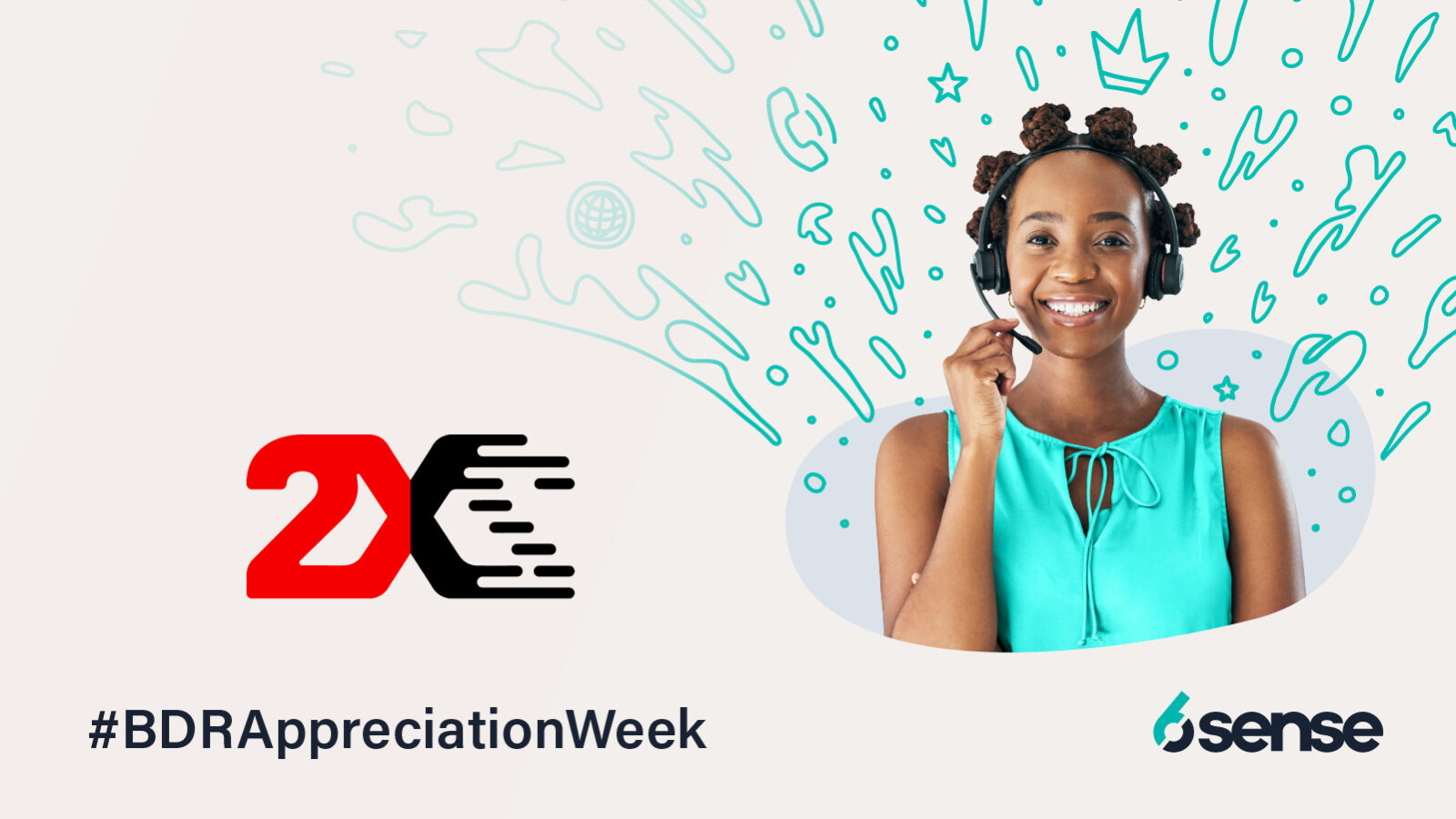Domenic Colasante is CEO at 2X, the category creator and fastest growing marketing-as-a-service firm. Domenic is a thought leader on marketing organizational models and operating model transformation. Previously, Domenic was CMO at WGroup and has held demand creation, marketing ops, analytics, and ABM roles at Siemens and SAP.
The unfortunate truth is that marketing teams don’t do enough to set BDRs up for success.
All too often, BDRs are being passed leads from casual white-paper downloads or lightly engaged form-fills and forced to fend for themselves — even though they’re critical to providing conversions from marketing’s efforts (as well as the ROI being reported).
Although there are tools like 6sense Revenue AI for Sales to relieve the pain on several fronts, until you’ve made the transition, marketing teams can — and should — do better about leaning in to help. Here are six actionable ways to do just that.
1. Unify Engagement Data and Provide Comprehensive Lead Profiles
BDRs often need to look everywhere for data on the contacts they receive. Don’t make them pull information from a dozen different places and systems. Round up the intent score, engagement history, LinkedIn profile, company research, and other relevant information from the CRM and your ABM and marketing automation platforms; then put it in one place and wrap it in a bow before routing that lead.
Since marketing should already be tracking and reporting on multiple intent signals and enabling true lead scoring, there should be huge improvement in the quality of information delivered to BDRs. This allows them to have more time to spend on what they’ve been hired to do: attracting and nurturing relationships with prospects.
2. Do a Contact Refresh for Every Account-Level Lead Being Routed
More and more account-level leads are being routed to BDRs, and finding the best contact information has become a new stream of work. Every company that has ever existed has missing and incorrect information, and Marketing should do a contact refresh along with routing the account.
It makes sense to scrub out bad data when an MQA or 6QA comes in, because marketing teams tend to have the tools to do it more easily and can see if emails have been bouncing or a phone number is clearly a 1-800 line.
3. Include Helpful Content in Briefing Packages
Although Marketing likely does update BDRs on what’s new in the content pipeline, the most effective time to provide a summary or links to relevant sales enablement assets is when a lead is being passed along in a CRM or sales enablement platform.
Having the best content at their fingertips when it’s time to chase down a contact always helps — and it could be as simple as including the top 3 relevant solution briefs or articles in the routing package.
Plus, the marketing team has spent so much time and effort developing that content, it’s a great way to see some ROI on it.
4. Research High-Priority Named Accounts to Support BDRs
Marketing should do desk research to support BDRs on high-priority accounts. Put together a company profile with event triggers, trends, company news, annual reports, and other background.
On the contact level, gather intel on the most important decision makers — what they’ve written or said publicly, and even some social profile information that could help build a professional connection, like through an alma mater or if they formerly worked at one of your clients.
Anything that could help a BDR form a connection point is valuable.
5. Provide Different Target Lists So BDRs Never Need to Cold Call
The marketing function is responsible for knowing who’s in-market, and a natural action point would be to provide warmer lists that can minimize the time BDRs spend cold calling. BDRs probably don’t have a list that’s informed by intent or engagement data — but marketing should.
A marketing team has looked at this data for segmentation and planning campaign strategy, and can easily generate newly in-market or engaged lists for BDRs. In other words, if the threshold for a lead is 100 points, what about a list for accounts that score above 80? These are more valuable targets than cold calls.
If a big part of a BDR’s job is to generate meetings, then it’s better to never let them make an actual cold call.
6. Help BDRs Optimize and Configure Any Sales Automation Tools They Have
Marketing should be responsible for supporting sales automation platforms like Outreach and SalesLoft.
BDRs aren’t system admins or marketing operations experts, but many are configuring the tech and orchestrating outreach sequences and flows on their own. In fact, getting the most functionality out of automation tools, along with writing and strategizing the most effective sequences falls under the marketing function.
The Ultimate Solve: Operating Model Transformation to Do More with Less
The real problem, of course, is not that marketing teams aren’t doing what they should. It’s that they can’t.
In a Gartner report on the State of Marketing Budget and Strategy, 58% of CMOs reported their teams lacked the in-house capabilities needed to execute their marketing strategy. The capacity constraints and shortage of B2B talent with new-age skills means they can’t execute on their biggest priorities, much less help their BDRs.
To truly do more with less requires marketing leaders to rethink how they organize and service the function with an operating model transformation.
With 2X’s marketing-as-a-service model, for instance, it’s possible to leverage a strong and efficient offshore team to do all the above — and execution help to unlock the full potential of 6sense — allowing BDRs to do what they do best.
About 2X
A pioneer in the B2B marketing-as-a-service (MaaS) category, 2X enables operating model transformation that drives growth in marketing’s contribution to businesses’ revenue and overall enterprise valuation.
With global headquarters in Philadelphia, US, and delivery operations in Kuala Lumpur, Malaysia, 2X comprises a world-class, diverse team of marketing strategists, developers, analysts, designers, and writers who work together to deliver high-impact account-based marketing and demand-generation programs, data analytics, and marketing technology management. 2X’s unique approach brings scale to B2B marketing for greater revenue impact, execution efficiency, and capacity for innovation. It currently ranks #663 on the Inc. 5000 list. For further information, visit: 2x.marketing/6sense.



